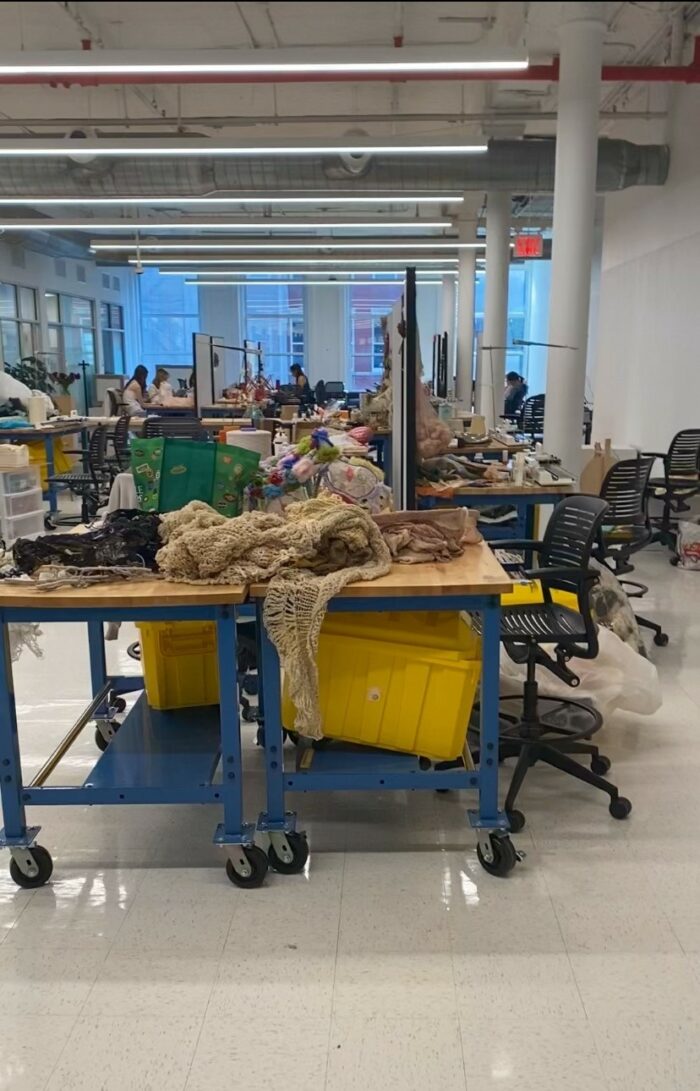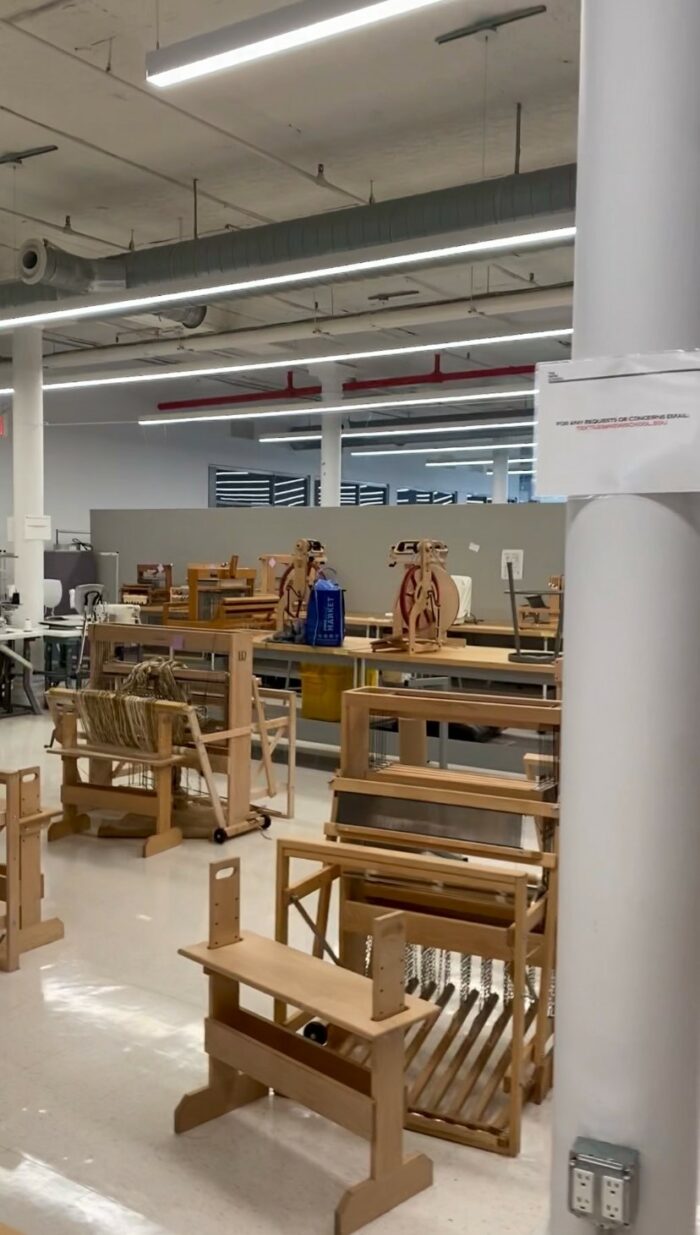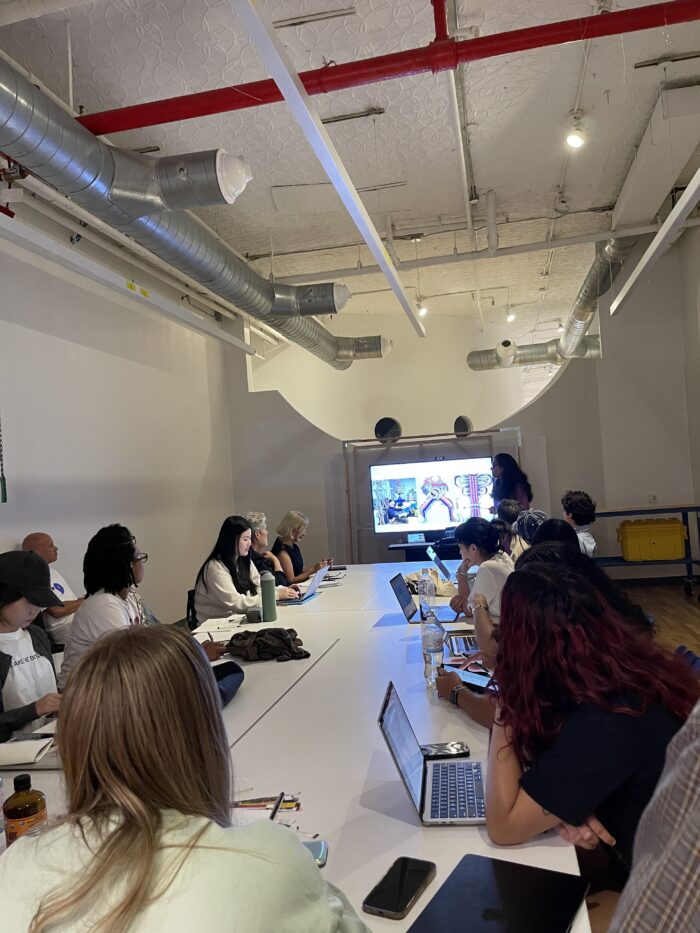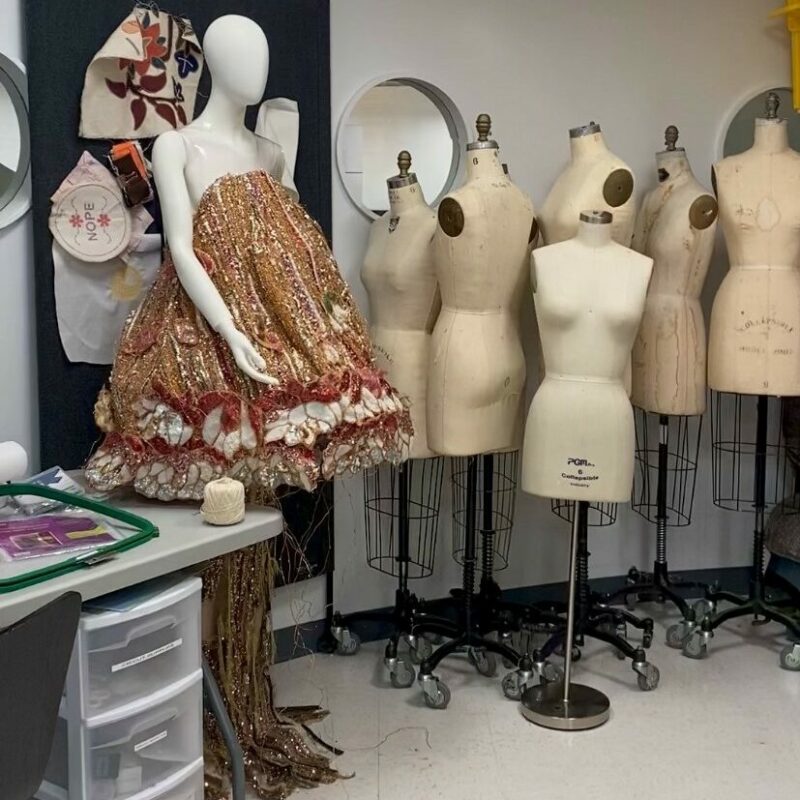As New York prepared to kick off fashion week, students in Archaeology of Media: Film, Fashion, Montage, a combined Graduate Center and Parsons course, visited Parsons’ Textiles Studio. Professor Preethi Gopinath guided our class through the open studio, which has a comfortable atmosphere with natural light and tables covered in colorful projects. “September is Textile Month in New York,” she informed us. Our visit came at an ideal time.

At one end of the studio, students busily worked on projects. “They are working on masks to introduce themselves,” Professor Gopinath explained. “The fabric, not the student, will do the talking.” As our class looked over the shoulders of concentrating students, we understood what she meant. Through the shaping and combining of materials, stories emerged.
The further we went inside the spacious studio, the more we understood that textiles can tell us not only a singular human’s story but also the story of humanity. “Textiles are a throughline of humanity,” Prof Gopinath told us. She explained that by examining thread and understanding how it was made, one gains significant insight into a culture, technology, and beliefs. For example, questions such as: What materials did they use? Where were they sourced? What colors and how did they dye it? And what was the scale? Tell us stories spanning the history of humanity. Furthermore, as the fashion industry becomes less and less sustainable, these stories and traditions are at risk of disappearance. That is one of many reasons why Textile Month is so important- to remember, celebrate, and reconnect.

Professor Gopinath guided us to a section of the room filled with looms. Some were small, others massive. Here, she gave a weaving demonstration peppered with history lessons and anecdotes from recent students. She described weaving as meditative. “Listen to the fabric and respond in the moment,” she repeated advice given to her students. “This is not about perfection,” was another piece of advice she told her students and reminded us. “Perfection is boring and leaves no room for learning.” We’re at school to learn after all.
Learning about thread can impact one’s life and society. We toured the studio, and then Prof Gopinath gave us a presentation on the moving textiles her students produced. Afterward, our class reconvened in a Parsons classroom to discuss. Professors Eugenia Paulicelli and Ulrich Lehmann observed a spirituality connected to weaving. A thread tells the story of generations and centuries; it connects to protect and attaches us to our heritage and one another. Adjacent to this spirituality is Professor Gopinath’s motivation for teaching. She worked in the fashion industry for a long time, she told us. She witnessed the waste and came to Parsons to make a difference. Her goal is to teach students to think of textiles in a fresh way. She encourages students to connect to their heritage, and she teaches sustainability. This education will impact the fashion industry or wherever students may go after leaving the classroom.

Professor Gopinath left the class with the message: “If you think sustainability, you will make an impact.” It is easy to get caught up in the largeness of what we need to do to prevent climate change and save the planet. But it begins simply, with thread, with a thought. To begin thinking about textiles and the planet in a fresh and sustainable way, join in the celebration of Textile Month. There are many exhibits and events which are open to the public, such as Threads of Connection: Textile Dialogues in a Changing World — New York Textile Month Additionally, a calendar of all events can be found at New York Textile Month. As New York celebrates fashion this week and month, let’s not just appreciate appearances; let’s think about textiles differently.

